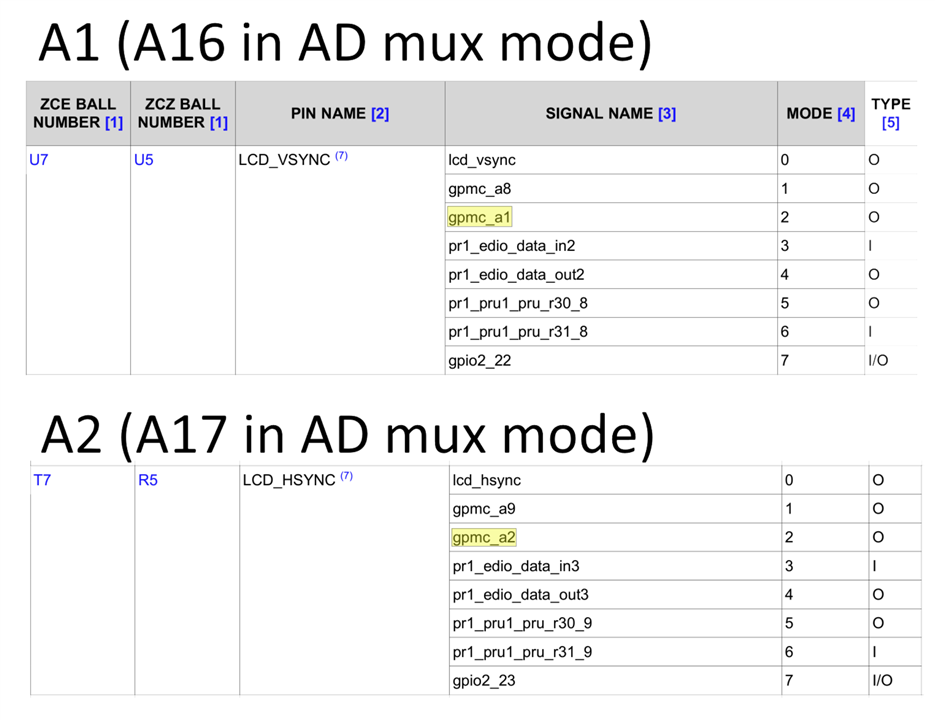Hello,
Let me confirm meaning of GPIO2_12 and 2_13 of ICE board version 2.1.
According to following user's guide, it seems that above two are for GPMC_A18 and A19 of NOR flash.
https://www.ti.com/jp/lit/ug/spruip3/spruip3.pdf
However, it seems that these are set as GPIO not GPMC.
Then I have following questions ?
Q1. Is my above understanding that signal "gpio2_12" and "gpio2_13" are set as GPIO correct ?
Q2. If so, is there any information how you control these gpios as address function of GPMC ?
BR,
-
Ask a related question
What is a related question?A related question is a question created from another question. When the related question is created, it will be automatically linked to the original question.



